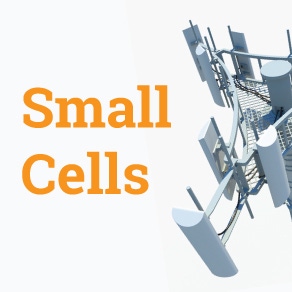Strategic deals with Cisco, Nokia and NEC help make one of the smallest small cell providers one of the biggest names in the enterprise market.

Small cell vendor SpiderCloud has been doing a pretty good job competing against the big infrastructure vendors on its own. But it's finding it can have a much bigger impact in the enterprise market by instead joining forces with some of those same giants.
The vendor has struck strategic deals with companies including Cisco Systems Inc. (Nasdaq: CSCO), Nokia Networks and NEC Corp. (Tokyo: 6701). SpiderCloud Wireless CEO Mike Gallagher says Cisco is by the far the biggest and fastest-growing partnership (winning it the distinction of 2015's Leading Lights winner for Best Deal Maker), while the Nokia tie-up is still in its early days. (See Leading Lights Finalists: Best Deal Maker.)
Nokia has traditionally only offered 3G/WiFi or LTE small cells indoors, so it's working with SpiderCloud to turn its LTE-only small cells into dual-mode 3G + 4G devices. Gallagher said that Nokia's sales force has been reselling SpiderCloud's dual-mode small cells since Mobile World Congress in February. (See Nokia Jumps Into 4G Small Cell Mosh Pit.)
Nokia's marketing manager for small cells, Stephane Daeuble, told Light Reading at the end of last year that the vendor wouldn't add 3G to any of its LTE small cells. Nor did Nokia think 3G was necessary for enterprises, but the company has obviously seen enough interest amongst its business customer base to bring SpiderCloud into the fold. (See LTE Small Cells Set to Be Big in 2015.)
Nokia wanted to gives its sales force the option of offering 3G if their customers asked, Gallagher said. "They have a hole in that they don't have 3G + 4G product."
[UPDATE: Nokia says it is not reselling SpiderCloud 3G+4G to enterprises and is only working with SpiderCloud for one specific customer. A spokeswoman says, "Nokia has no intention of disclosing the terms because of customer confidentiality. Nokia is also not in any early stage discussions with SpiderCloud on partnering."]
SpiderCloud's customer base could get a lot bigger, too, if Nokia's acquisition of Alcatel-Lucent (NYSE: ALU) is approved, bringing the two big vendors together with SpiderCloud and Eden Rock, the multivendor self-organizing network (SON) company that Nokia recently acquired. (See Nokia Makes €15.6B Bid for Alcatel-Lucent and Eurobites: Nokia Buys SON Specialist.)
One of the first manifestations of SpiderCloud's relationship with Cisco, a deal that was actually announced at MWC, is what Gallagher calls a "clip-on," a private branded product that takes SpiderCloud's 3G or 4G access points and clips on to the top of an existing Cisco WiFi access point. "It's taking our power, re-using its cable, and installation can be done in 120 seconds," Gallagher said. As such, SpiderCloud can now be deployed as an overlay wherever Cisco already has an AP set up without the need for a new Ethernet LAN or equipment. (See Cisco to Resell SpiderCloud's Small Cells.)
This is the first step, but the SpiderCloud Chief says it's also talking to Cisco about SON projects, virtualization and their core products. (See SpiderCloud: Cisco 'Naïve' on Small Cells.)
For more on these mini-RANs, visit the small cell content channel here on Light Reading.
Gallagher attributes SpiderCloud's rise to success to the fact that it got into the small cell market early and proved its model in carrier labs -- that model being a small cell system with the ease of deployment and cost of WiFi that works in any heterogeneous network environment, unlike its biggest competitor and favorite punchbag, Ericsson AB (Nasdaq: ERIC), which only works with its own radio access network. (See NSN, Ericsson Butt Small Cells.)
Since its launch in 2008, SpiderCloud has -- on the one hand -- racked up impressive deals on its own, including contracts with Vodafone Group plc (NYSE: VOD) and Verizon Wireless , and 12 in the past year alone. On the other hand, SpiderCloud has signed up more operators via the strength of its partners, as with Nokia and NEC at América Móvil S.A. de C.V. (See SpiderCloud Lands 4G Small Cell Deal in Pakistan, Telcel Turns Up SpiderCloud's Enterprise Small Cells, Verizon Taps SpiderCloud for Dual-Band 4G Small Cells and Vodafone Deploys SpiderCloud's Small Cells.)
"We have to work in a heterogeneous environment, especially if you want global or national deployments," Gallagher explained. "To scale into that market place, you need multiple partners with intrinsic strength."
So what's next for the little small cell company that could? Gallagher says it has trials or commercial launches with almost every operator in North and South America, and it's starting to see continental Europe heat up alongside Asia and the Middle East. He said to expect more announcements in the second half of the year. (See SpiderCloud Evolves Its Small Cells.)
The CEO also isn't ruling out an IPO or an outright sale of the company -- every company is for sale at a price, he says, quickly adding that SpiderCloud doesn't need the money. If that's the case, he likely won't have a hard time finding interest from his bigger competitors-turned-partners -- or perhaps even from companies that remain competitors, who once dismissed SpiderCloud as an annoying fly (or spider) in the room. (See SpiderCloud Banks $20M in Fresh Funding.)
Right now, Gallagher says SpiderCloud is in "full-blown execution mode," but it is open to anything, including even more partnerships to help the company grow its reach further.
"There's a great reward in a small company taking business away from incumbents," Gallagher said. "There are only a handful of small companies successful with mobile operators. It's hard to crack that market. We're in a really good space, and we're focused on scaling the company. The outcome will be the outcome -- whatever makes sense."
— Sarah Thomas, 

 , Editorial Operations Director, Light Reading
, Editorial Operations Director, Light Reading
About the Author(s)
You May Also Like











